
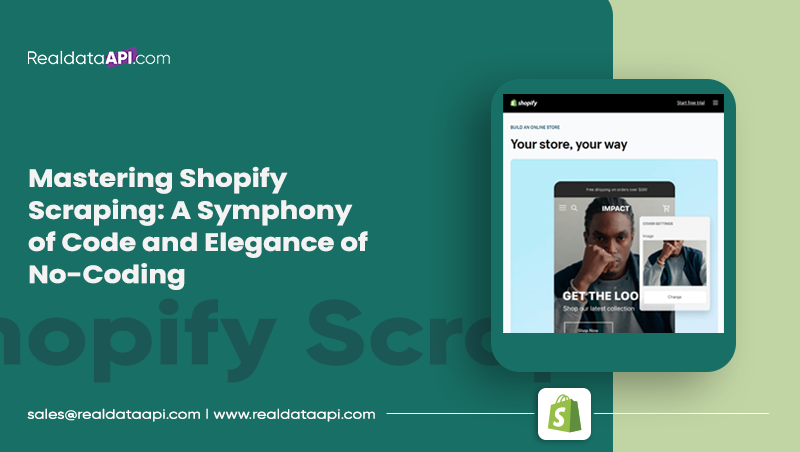
Introduction
In the ever-evolving realm of eCommerce, having access to critical data and insights is a game-changer. Shopify, one of the most popular eCommerce platforms, is home to a vast array of valuable information. Whether you're a business owner seeking competitive intelligence, a developer looking to create custom solutions, or a curious explorer in online commerce, web scraping offers the key to unlocking this treasure trove of data.
Our journey begins with the art and science of Shopify scraping. This exploration will delve into two distinct approaches: code-based and no-code methods. Each approach has its unique allure, making web scraping accessible to tech-savvy and those without coding experience.
The code-based approach empowers you to craft customized scrapers, offering flexibility and fine-grained control. You'll learn to use Python and popular libraries like Beautiful Soup to extract data efficiently.
On the other side of the spectrum, the elegance of no-coding solutions offers a more accessible path. With the help of user-friendly web scraping tools, you can create effective scrapers with just a few clicks.
So, whether you're searching for market insights, looking to monitor product prices, or simply keen to embark on a data-driven adventure, our journey into mastering Shopify scraping will equip you with the skills and knowledge to navigate the eCommerce landscape with confidence and finesse. Strap in, and let's unlock the world of Shopify data through a symphony of code and the elegance of no coding.
Constructing a Shopify Scraper in JavaScript/Python
In the world of eCommerce web scraping has become an essential tool for extracting valuable data from websites. Shopify, one of the leading eCommerce platforms, hosts a vast array of online stores and product information. For businesses, developers, and data enthusiasts, the ability to scrape Shopify can provide crucial insights into market trends, competitor pricing, and more. In this guide, we'll explore how to construct a Shopify scraper using JavaScript and Python, two popular programming languages.
Why Scrape Shopify?

Shopify scraping serves multiple purposes:
Competitor Analysis: Monitor your competitors' products, pricing, and inventory to gain a competitive edge.
Price Monitoring: Keep track of price changes for specific products, allowing you to adjust your pricing strategy.
Market Research: Analyze market trends, demand for certain products, and customer reviews.
Inventory Management: Automate inventory updates and product listings for your own Shopify store.
Code-Based Approach: Python
Python is a versatile language known for its simplicity and powerful libraries for web scraping. We'll use the requests library to fetch web pages and Beautiful Soup for parsing the HTML content.
Steps to Construct a Python Shopify Scraper
Install Required Libraries: Make sure you have Python installed. Install the required libraries using pip.
pip install requests beautifulsoup4Code Your Scraper: Write Python code to scrape data from a Shopify store. Here's a simple example:
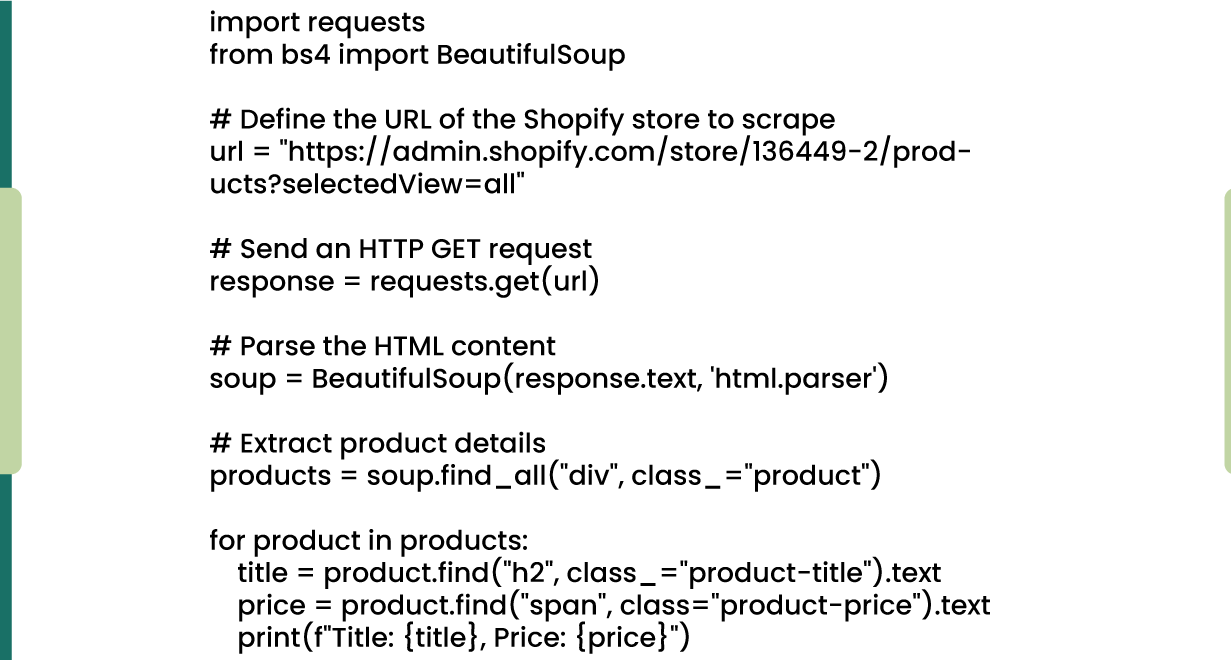
Run the Scraper: Execute your Python script to scrape product information from the specified Shopify store.
Code-Based Approach: JavaScript
JavaScript is commonly used for web scraping due to its integration with web browsers. We'll use Node.js along with the axios library to fetch web pages and cheerio for parsing HTML.
Steps to Construct a JavaScript Shopify Scraper

Install Required Libraries: Make sure you have Node.js installed. Create a new Node.js project and install the necessary libraries.
npm initnpm install axios cheerioCode Your Scraper: Write JavaScript code to scrape data from a Shopify store. Here's a basic example:
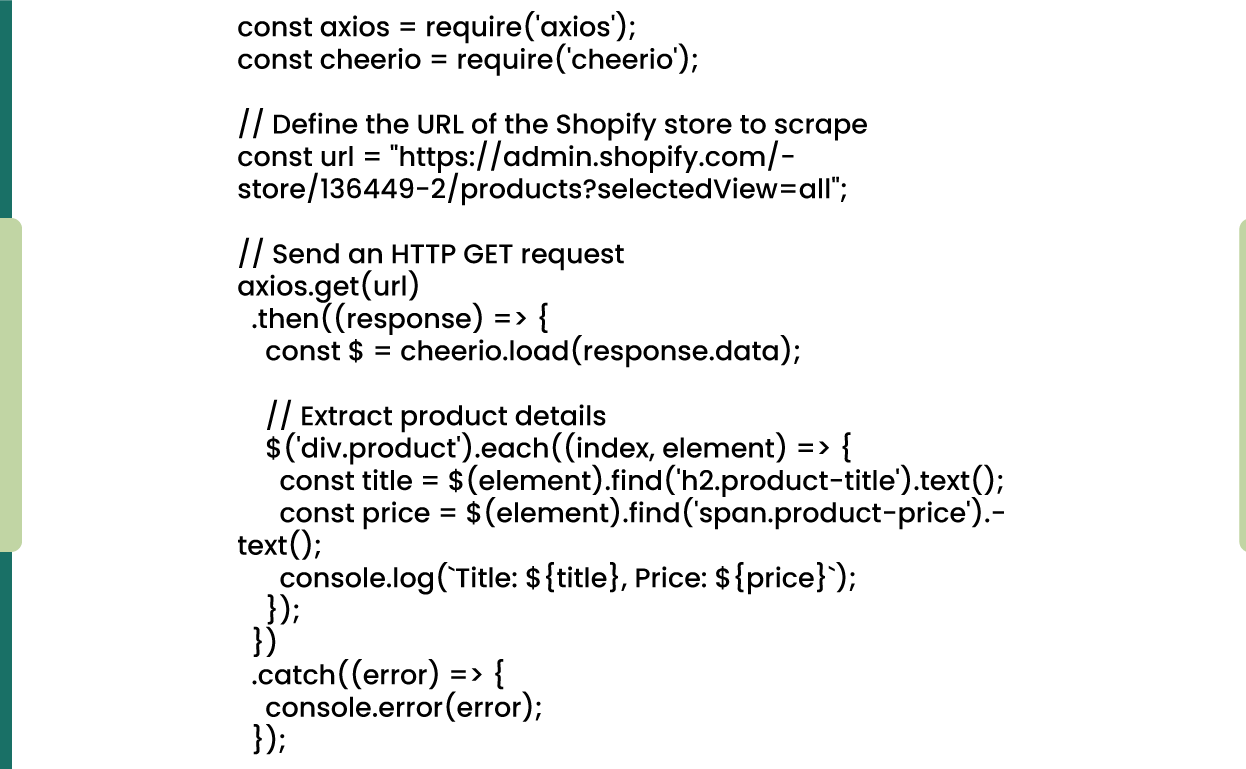
Run the Scraper: Execute your JavaScript script using Node.js to scrape product information from the specified Shopify store.
Non-Coding Approach
Web scraping has become a crucial tool in eCommerce, enabling businesses and individuals to extract valuable data from websites. Shopify, one of the leading eCommerce platforms, hosts a wealth of online stores and product information. Whether you're a business owner, developer, or data enthusiast, the ability to scrape Shopify can provide essential insights into market trends, competitor pricing, and more. In this guide, we'll explore constructing a Shopify scraper using a no-coding approach, utilizing web scraping tools requiring minimal coding skills.
Why Use a No-Coding Approach for Shopify Scraping?
A no-coding approach is an excellent choice for individuals who may need more programming experience but still want to leverage the power of web scraping. These tools provide user-friendly interfaces that simplify the scraping process, making it accessible to a broader audience.
Steps to Construct a Shopify Scraper with a No-Coding Approach

Choose Your Web Scraping Tool: Select the no-code web scraping tool that best suits your needs and sign up for an account if required.
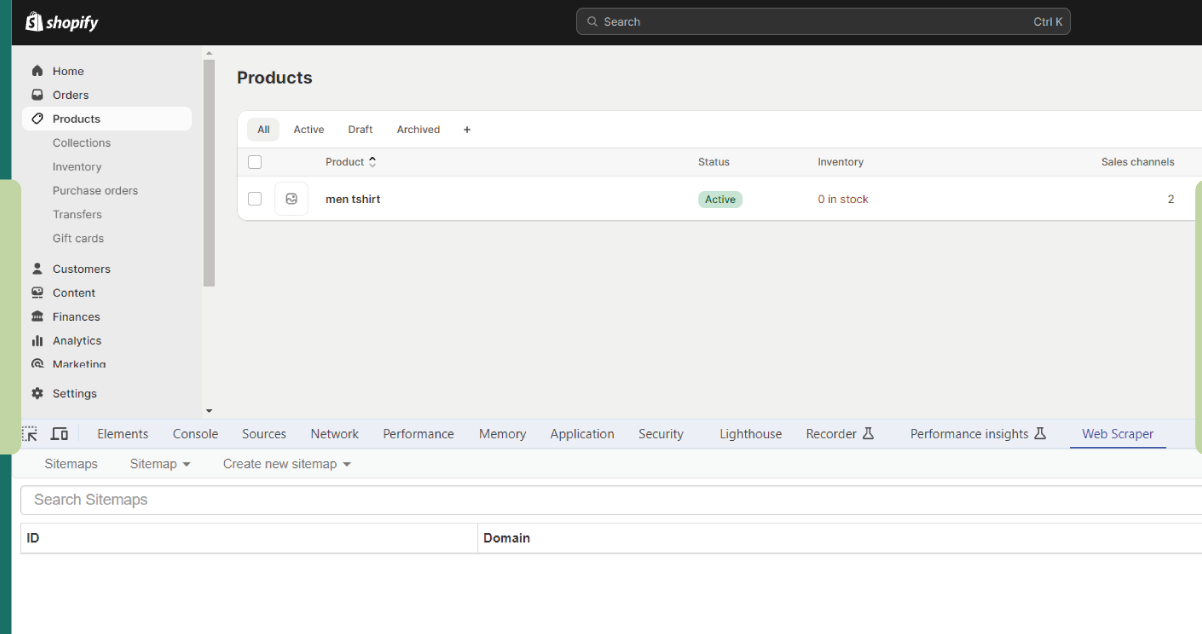
Create a New Project: In your chosen tool, create a new project, and specify the URL of the Shopify store you want to scrape.
Configure Data Extraction: Utilize the tool's point-and-click interface to select and configure the data you want to extract. This typically involves clicking on webpage elements and specifying the data to scrape.
Start the Scraper: Run the scraper within the tool. The tool will automatically navigate the Shopify site, extract the specified data, and present it in a structured format.
Export Data: Most no-code web scraping tools allow you to export the scraped data in various formats such as CSV, Excel, or JSON.
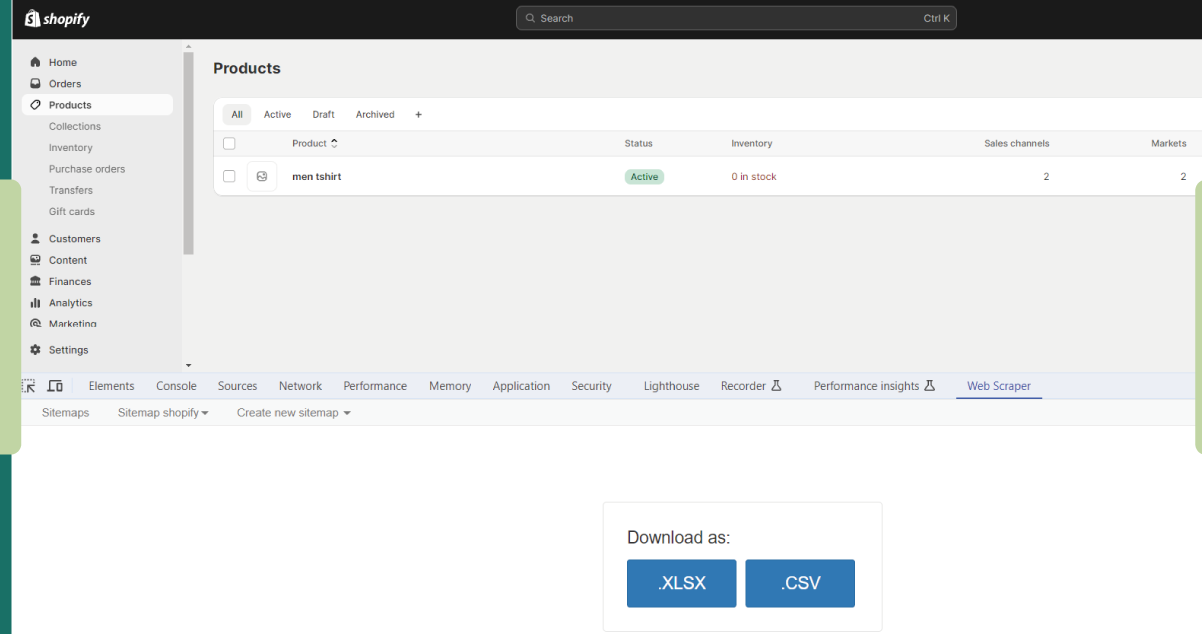
Using a no-coding approach with web scraping tools is an accessible way to gather valuable data from Shopify and other websites. It allows individuals without programming skills to harness the power of web scraping and gain insights into market trends, competitor analysis, and other e-commerce-related information.
How Data Scraping Transforms Shopify Insights?
Let's delve into ten specific Shopify scraper use cases in more detail:
Competitor Price Monitoring
Keeping an eye on your competitors' pricing strategies is crucial in a highly competitive eCommerce landscape. You can track real-time price changes, discounts, and promotions by scraping data from rival Shopify stores. This allows you to adjust your pricing strategies to remain competitive and maximize profitability. Additionally, you can set up automated alerts to be notified when your competitors change their prices, giving you a strategic advantage.
Market Research
Market research involves understanding consumer behavior market trends, and identifying opportunities. Scraping data from various Shopify stores can provide valuable insights into customer preferences, demand for specific products, and emerging market trends. You can also analyze customer reviews and feedback to understand better the strengths and weaknesses of products in your industry.
Inventory Management
Managing inventory can be a time-consuming task for eCommerce businesses. Shopify scraping can automate this process by providing real-time updates on stock availability and product listings. By integrating data from your suppliers or competitors, you can ensure your Shopify store always reflects accurate inventory levels.
Price Comparison Websites
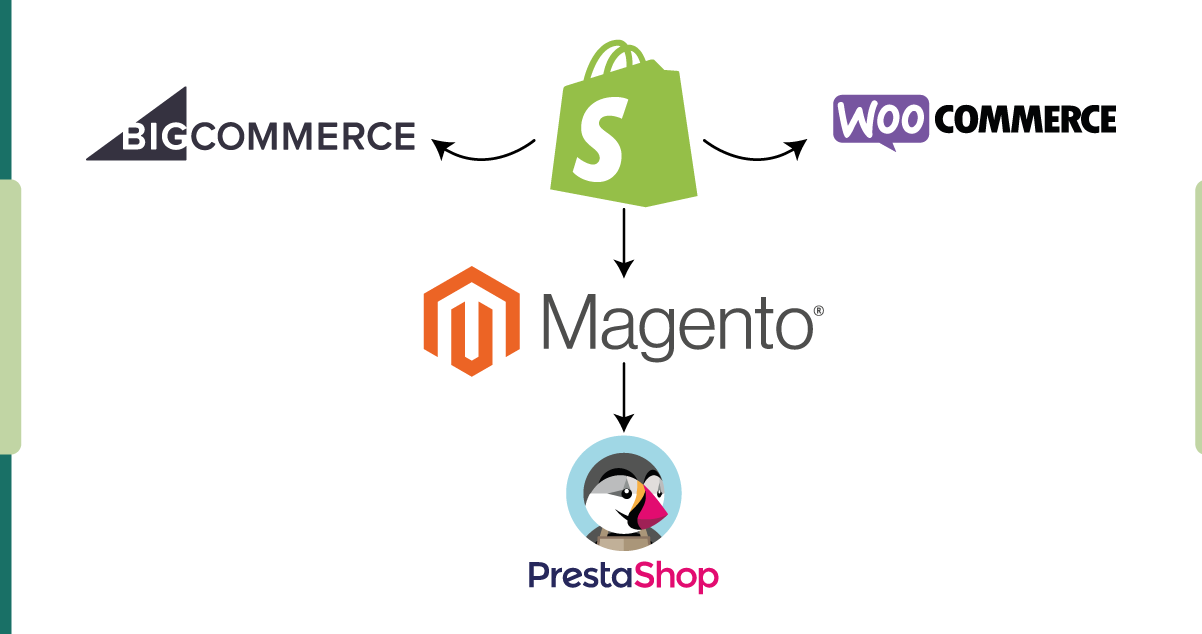
Building a price comparison website is an everyday use case for Shopify scraping. You can aggregate product data from multiple Shopify stores and present it to consumers in an easy-to-understand format. This helps shoppers find the best deals, compare prices, and make informed purchasing decisions, while you can generate revenue through affiliate marketing or advertising.
Sales and Discounts Tracking
Shopify scrapers can track sales, discounts, and special promotions. This is particularly valuable during peak shopping seasons, like Black Friday or Cyber Monday. By monitoring Shopify stores for discounts and sales, you can swiftly identify opportunities to market discounted products to your customers or find deals for your needs.
Product Data Extraction
Extracting detailed product information is a fundamental use case. Shopify scraping lets you gather product details such as titles, descriptions, images, pricing, and specifications. This data can be used to create comprehensive product catalogs, import products to other platforms, or feed data to your online store.
Review and Feedback Analysis
Customer reviews and feedback provide valuable insights into product quality and customer satisfaction. By scraping reviews and feedback from various Shopify stores, you can conduct sentiment analysis, identify areas for improvement, and make data-driven decisions to enhance product offerings and customer service.
SEO and Content Creation
Shopify scraping can aid content creation for SEO purposes. You can extract product descriptions, images, and specifications to create unique and engaging content for your website or blog. This improves your website's SEO and provides valuable information to your customers.
Ad Campaign Strategy
Ad campaigns can benefit from Shopify scraping by gaining insights into product popularity and trends. You can identify which products are trending, what customers are searching for, and how your competitors advertise. This data informs your ad campaign strategies, helping you target the right audience and optimize your advertising budget.
Brand Monitoring
Brand consistency is vital for maintaining a solid online presence. Shopify scraping allows you to monitor how your brand and products are presented across various stores. This includes product descriptions, images, pricing, and even customer reviews. Ensuring a consistent brand image builds trust with your customers and protects your brand's reputation.
These detailed use cases showcase the versatility and potential of Shopify scraping, making it a valuable tool for businesses looking to gain a competitive edge, understand their market, and optimize their operations. Always conduct web scraping by legal and ethical guidelines and respect the terms of service of the websites you interact with.
Conclusion
Mastering Shopify scraping offers an array of possibilities for eCommerce success. Whether you prefer the code-driven precision or the no-coding elegance, you're empowered to harness the wealth of data within Shopify. It's time to put these skills to work and explore even further. And for those seeking a seamless API solution for real-time data access, consider the Real Data API, your gateway to a world of actionable insights. Get started today and take your eCommerce endeavors to new heights! Your journey to data-driven success awaits.













